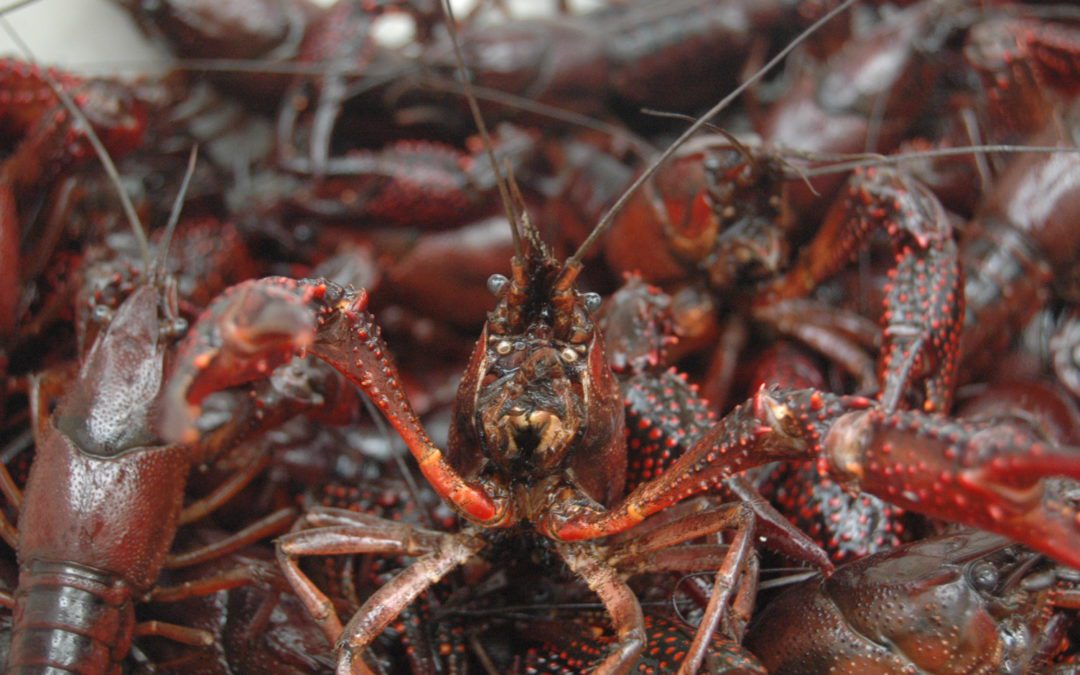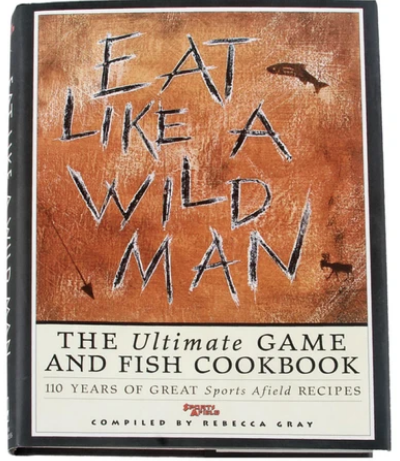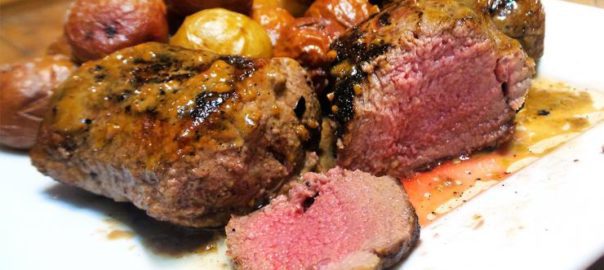If you want a delightful seafood dinner, and you can’t afford lobster, then say hello to my little friends.
They are called by many names: crayfish, crawfish, crawdads, mudbugs, mountain lobsters and yabbies. They have more names than Carter’s has Little Liver Pills, but no matter what you call them lots of folks love these freshwater crustaceans that resemble their larger, more respected cousin, the lobster. Our Cajun cousins have laid claim to them, harvesting, consuming and exporting roughly one hundred million pounds a year in Louisiana, but you can find relatives of the Cambaridae family from continent to continent, from boggy bayou to our own South Carolina Lowcountry backyards.
If you have never enjoyed a crawfish boil, then perhaps you have lived a sheltered life and need to get out more. But if you have stuffed your craw with crawfish, then you know what the Cajuns are ragin’ about.
Often bottom-dwelling creatures, these omnivores scavenge for living or dead plant and animal matter but can tear up larger pieces of food with their outsized claws. W.I. Williams, a S.C. accountant by day and avid swamp fisherman at night, has a theory as to why the crawfish is one of the best tasting critters around.
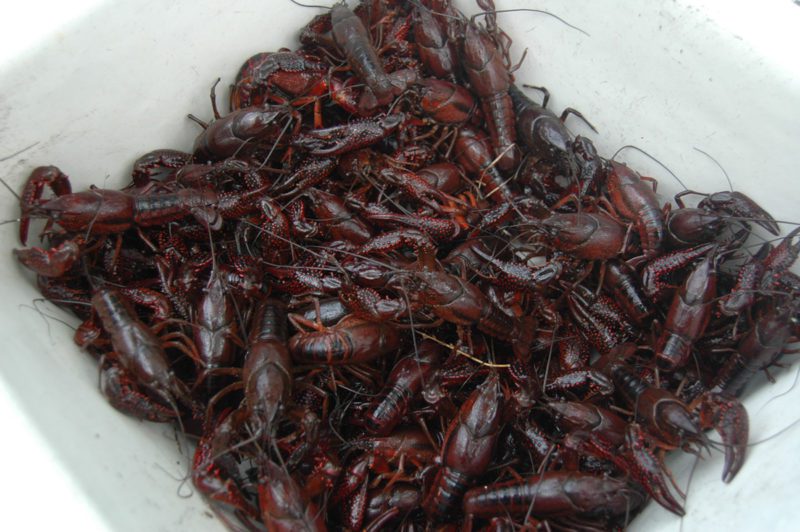 “Basically, the nastier an animal’s diet is, the better tasting its meat is,” Williams explained. “Look at the chicken. It scratches and eats any nasty thing it can find on the ground, but the Colonel sells a million of them a year. Look at the catfish, the crab, the crawdad. That’s some of the best eating around. But they all scavenge dead, rotten fish and other decaying animals from the bottom. Doesn’t make any sense, but that’s the secret.”
“Basically, the nastier an animal’s diet is, the better tasting its meat is,” Williams explained. “Look at the chicken. It scratches and eats any nasty thing it can find on the ground, but the Colonel sells a million of them a year. Look at the catfish, the crab, the crawdad. That’s some of the best eating around. But they all scavenge dead, rotten fish and other decaying animals from the bottom. Doesn’t make any sense, but that’s the secret.”
Williams added that he would love to explain his theory in further detail, but he was busy perfecting his recipe for Kentucky Fried Buzzard.
The southeast United States is home to the greatest number of crawfish species in the world, with roughly 40 in South Carolina alone. Some species are found in brooks and streams of running water, while others thrive in swamps, rice paddies and ditches. In the Palmetto State, most grow from two to six inches and are reddish brown in color.
Eaten worldwide by humans, they are also commonly used as bait for channel catfish, trout, largemouth bass and other species of game fish. So the crayfish, functioning as both nature’s clean-up crew and everybody’s seafood dinner, is a valuable part of the food chain in many ecosystems.
To many anglers, the beauty of crawdad fishing in rivers and swamp is that you can drop off traps and let them sit all day, while fishing for redbreast or swamp cats for hours. Pull your traps on the way out of the swamp, and you’ve got a good chance of going home with a full-course seafood dinner.
How to Catch “A Mess”
Depending on weather and water levels, the peak season for crawdad fishing is March to July, although they can be caught at any time of year. While you may pull in the occasional fellow while bream fishing, or even “noodle” one from beneath a rock if you’re quick enough, to take crawfish from swamp to dinner table in enough quantities to make a decent meal requires two things: bait and a trapping device. Because crawfish are scavenging omnivores who are highly sensitive to odors and aren’t picky about freshness, bait can range from old chicken from your local grocer to aged fish and even commercial, formulated baits.
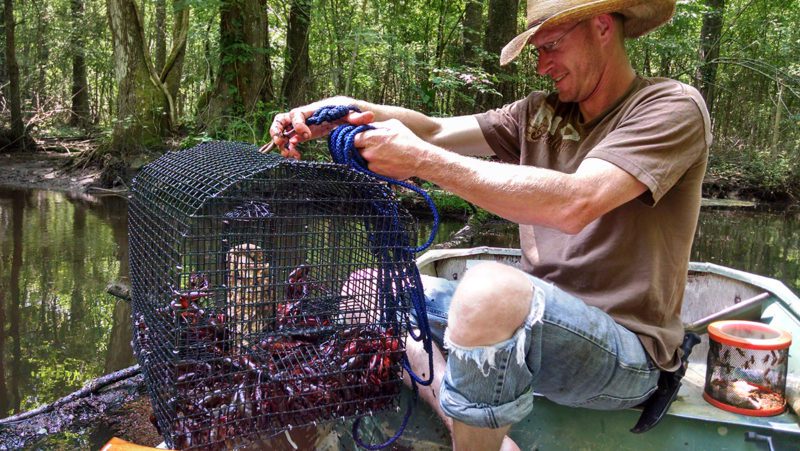
Once you have your bait, there are generally two methods of catching crays:
– Many crawdad fishers use homemade baskets or trays about four to five inches deep and made of fine mesh wire or hardware cloth. The baskets are generally shallow and open across the top. Fasten the bait to the center of the basket, find a safe bridge over a swamp run or creek, and lower it to the bottom with a stout cord or rope. Allow the baskets to sit for 15-30 minutes, and then slowly pull them up to check your harvest. Repeat until you get a mess, or try another bridge if the pickings are slim.
– The second method involves placing a baited trap in a suitable spot in moving water such as a side run or moderately shallow creek, where the trap can be placed on the bottom but easily reached. Generally traps are allowed to sit at least overnight before being checked, but you can let them sit for a day or two. Crawfish traps range from fancy commercial models (the pyramid trap, a three-sided affair with three entrances, is the industry standard) but any kind of homemade rig that allows crawfish to enter through a funnel–shaped opening and become trapped will work. Again, hardware cloth is the wire of choice. A word of warning about traps: openings must be small enough for a crawfish but not for most fish. A trap that catches fish may be illegal in many states.
Fascinating Facts About Crawfish
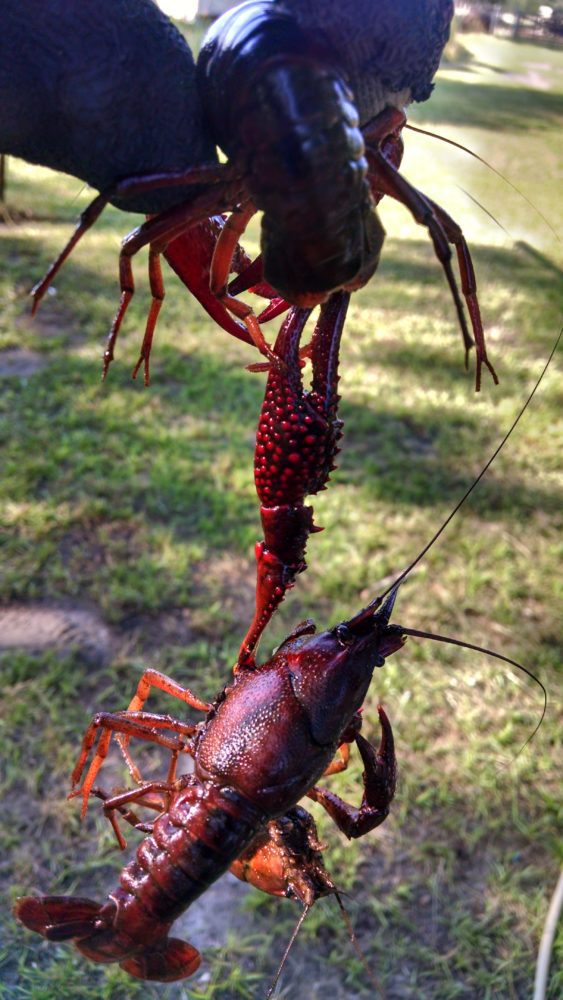 The world is home to more than 600 species (350-plus live in North America), from the dwarf crayfish to Australian monsters that weigh several pounds. They come in colors that range from red to blue and even white, and new species are still being discovered.
The world is home to more than 600 species (350-plus live in North America), from the dwarf crayfish to Australian monsters that weigh several pounds. They come in colors that range from red to blue and even white, and new species are still being discovered.- Because of their global distribution and the ages of the species—their fossils have been dated to 150 million years old—crayfish have been used in studying the continental shift and the development of the theory of plate tectonics.
- Some crayfish have been known to travel for miles on dry land during wet seasons (as long as their gills stay damp, they can survive), and it has even been reported that an African species will travel in the wet footprints of hippos.
- Females can lay up to seven hundred eggs at a time, depending on the species. The eggs hatch in roughly two weeks and the young hang out under the mother’s tail through two molts before heading out on their own, where they are preyed on by insects, fish and even other crayfish.
- If there is water, you can find crawdads, but even in some upland areas they have been known to burrow to find groundwater, leaving “mud chimneys” in their wake.
CRAWFISH RECIPES
While the crawfish boil, heavily seasoned and loaded with sausage, corn, potato and onion, has become a Southern tradition and a Louisiana staple, there are many creative uses for this tasty freshwater meat.
Craw Cakes
You will never look at crab cakes the same way again after you try these craw cakes.
- 1 cup cooked, cleaned crawfish tails
- ½ tsp minced garlic
- 2 tbsp each finely chopped green onion, bell pepper and celery
- 1 egg
- ½ cup bread crumbs
- ½ tsp concentrated basil paste
- ½ tsp concentrated oregano paste
- Soy sauce, salt and black pepper to taste
- 2-3 tbsp cooking oil or bacon drippings
- Chopped parsley for garnish
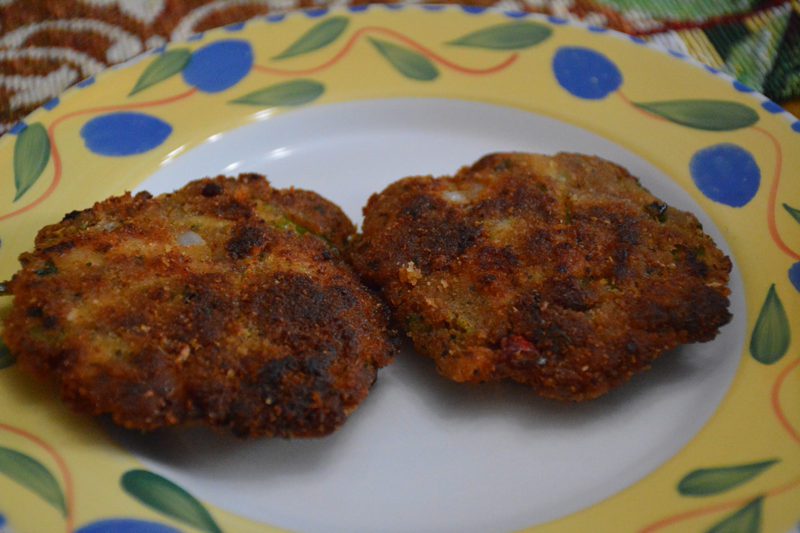
Pour 1 tablespoon oil or bacon drippings into a skillet and sauté the peppers, onion and celery, cooking until tender. Remove from heat. Add garlic, crawfish and spices. Once cool, transfer to a mixing bowl and stir in egg and enough bread crumbs to bind. Form
into 3/4 inch thick patties, then roll in remaining bread crumbs. Heat the remaining oil or grease in a sauté pan and pan fry cakes on both sides until brown and crispy. Garnish with parsley.
Crawdaddy Pasta
This pasta and a bottle of wine are all you need for a romantic evening. A date is optional.
- 1 ½ pounds cooked, cleaned crawfish tails
- 2 (8 ounce) packages angel hair pasta
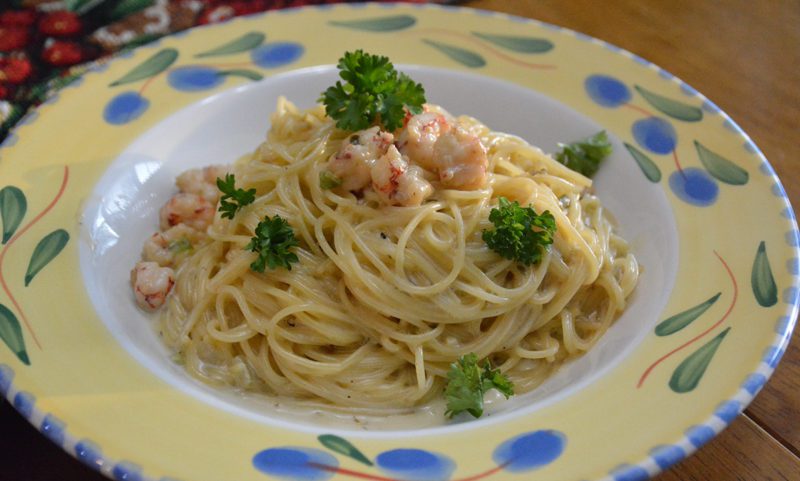
- 6 cups heavy whipping cream
- ½ cup of butter (or bacon grease)
- 1 cup chopped green onions
- ¼ tsp concentrated basil paste
- ¼ tsp concentrated oregano paste
- Soy sauce to taste
- Seasoning salt to taste
- Garlic to taste
- Pepper to taste
- Olive oil to taste
In a large pot of boiling salted water, cook angel hair pasta until al dente. Drain and drizzle with olive oil. In a large sauté pan, melt butter or bacon drippings over medium heat, then sauté the green onions and garlic (being careful not to burn the garlic). Stir in the spices and heavy cream. Cook until the sauce is reduced by almost half. Stir in the crawfish and heat thoroughly. Serve over hot angel hair pasta.
Eat Like a Wildman is a collection of the top rated wild game and fish recipes that Sports Afield magazine has published over the last 110 years. Lifelong food critic and cookbook author, Rebecca Gray selects and infuses a wonderful-tasting standards with her own culinary wizardry and provides instruction on the best methods for preparing fish and wild game to cook. Buy Now

